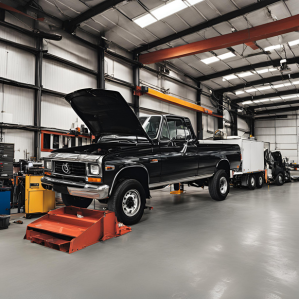Wise Bookkeeper Blog

How to Budget for Equipment and Fleet Maintenance in Your Roofing Business
Maintaining equipment and vehicles is crucial for the success of any roofing business. Without a proper budget for these expenses, unexpected repairs can cut into your profits. Here are a few tips to help you stay on top of your equipment and fleet maintenance budget:
Track Maintenance Costs

Keep a detailed record of every repair, service, and part replacement for each vehicle and piece of equipment. This helps you identify patterns and forecast future expenses.
Set aside a portion of your monthly revenue for equipment and fleet maintenance. This ensures you have funds readily available for emergency repairs. A good rule of thumb is to set aside 5-10% of your monthly revenue. This helps cover routine maintenance, repairs, and unexpected breakdowns. Here’s a breakdown:
1. Preventive Maintenance: Plan for oil changes, tire replacements, and inspections. This could be 2-4% of your monthly revenue.
2. Repairs and Emergency Funds: Allocate 3-5% for unexpected repairs or equipment breakdowns.
3. Replacement Savings: Factor in 1-2% to gradually save for future replacements due to depreciation.
Adjust these percentages based on the age and condition of your equipment and vehicles.
Schedule Regular Inspections
Preventative maintenance can save you money in the long run. By scheduling regular check-ups, you can catch small issues before they turn into costly repairs.
Regular inspections for vehicles and equipment in a roofing business should cover these key areas:
For Vehicles:
1. Tires: Check for wear, proper inflation, and alignment.
2. Brakes: Inspect brake pads, fluid levels, and responsiveness.
3. Fluids: Check oil, coolant, transmission, and brake fluids.
4. Lights: Ensure all headlights, brake lights, and signals work.
5. Belts and Hoses: Look for wear or cracks in belts and hoses.
6. Battery: Test for proper charge and check for corrosion.
7. Suspension: Inspect shocks, struts, and suspension components.
8. Windshield and Wipers: Ensure visibility and replace wipers as needed.
For Equipment:
1. Blades and Attachments: Check for sharpness and functionality.
2. Motors and Engines: Inspect for smooth operation, oil levels, and leaks.
3. Safety Features: Ensure guards and safety switches are intact.
4. Hydraulics: Check for leaks, pressure, and proper operation.
5. Belts and Gears: Inspect for tension, wear, and alignment.
6. Cables and Hoses: Look for signs of damage or wear.
Performing these inspections regularly helps extend the life of your equipment and avoid costly repairs.
Consider Depreciation

Equipment and vehicles lose value over time. Account for depreciation in your budget, and plan for eventual replacements by saving a little each year. For more information about depreciation, see my blog "Understanding Depreciation for Roofing Equipment: A Guide for Roofing Companies".
By budgeting effectively for equipment and fleet maintenance, roofing businesses can avoid costly surprises and keep operations running smoothly.
We're here to help. Want to understand more about budgeting? Schedule a time to chat with us at www.wisebookkeeper.com
© 2024 Very Good Business Services
Contact
2703 Garden Brook Trl, Belton, TX 76513
kendra@wisebookkeeper.com
(254) 863-8001


